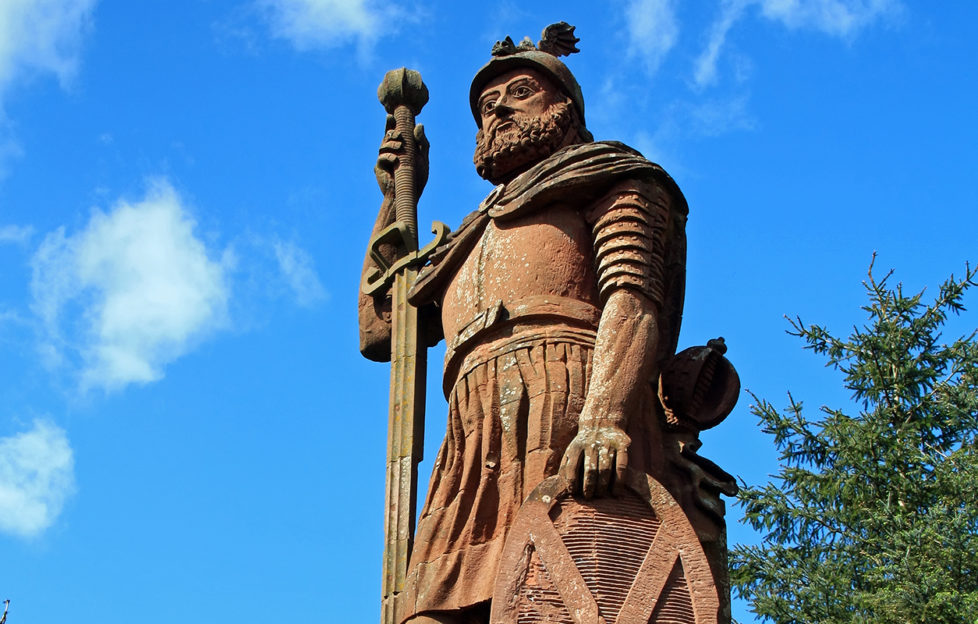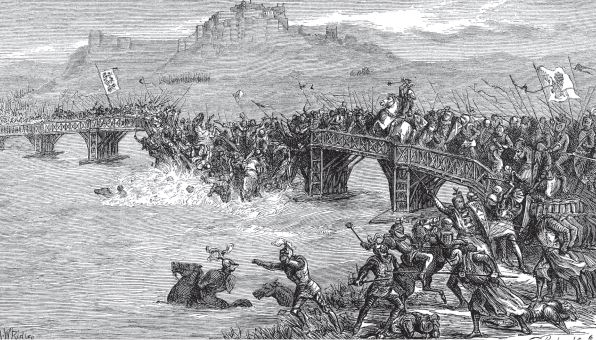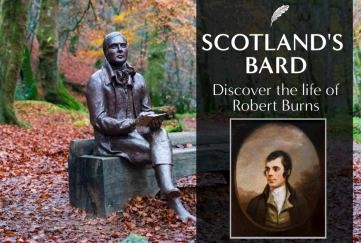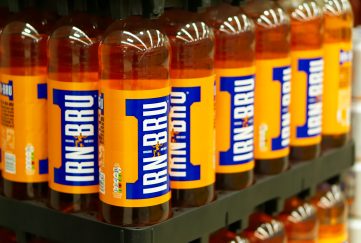Scottish History In Minutes – The Story Of William Wallace

Sir William Wallace, a Scottish knight and one of the main leaders during the First War of Scottish Independence…
Sir William Wallace is one of Scotland’s national heroes. The man’s life has everything needed to qualify – triumph, defeat, survival against the odds. Not to mention, tragic betrayal and finally martyrdom in the most brutal of executions.
No wonder Sir William Wallace’s story has inspired numerous novelists, poets, songwriters and filmmakers down the centuries. Not least Mel Gibson, whose 1995 film Braveheart remains iconic to this day. This annoys historians due to its numerous inaccuracies.
Limited historical records make the story difficult to trace. Therefore, it’s easy to see why we rely on the legend first written down in The Wallace. This epic narrative by 15th century Scottish poet, Blind Harry, clearly touches on something that dry histories don’t. It also remains a popular source of information on Wallace to this day.
Nonetheless, we do know that Sir William Wallace was a Scottish knight who became one of the main leaders during the First War of Scottish Independence.

But, we can’t even be certain about where and when Wallace was born. Some historians, like Ian Donnachie and George Hewitt – authors of The Birlinn Companion to Scottish History, 2007 – confidently describe the legendary fighter as “the second son of Sir Malcolm Wallace of Elderslie” in Renfrewshire.
Yet others are more wary. Author Chris Brown, for example, points out that Wallace’s earliest exploits happened in and around Ayrshire. Wallace is a relatively common surname in this area.
Wars of Independence
This particular Wallace lived during the early years of the Wars of Independence. During this time, implacable English king Edward I had successfully deposed the Scottish monarch John Balliol. King Edward’s goal was to bring all of the British Isles under his personal control. Wallace’s loyalty to the Balliol cause was steadfast. Therefore, he fought against the English occupation and for the restoration of his king until the bitter end.
The earliest recorded action we know of was the 1297 murder of Sir William Haselrigg, sheriff of Lanark. According to Blind Harry, it was revenge for the murder of Wallace’s mistress.
By May of that year, Wallace was leading a group of men-at-arms. Meaning soldiers who served as armoured heavy cavalrymen. On one occasion, they descended on an official, William Ormsby, as he opened his court session at Scone. Ormsby managed to escape and, therefore, warn his superiors that a revolt against the English occupation was under way.

In August, Wallace had linked up with a similar rebel Sir Andrew Murray, heir to a northern baron. Their combined forces immediately had a better chance of success against any English forces. Wallace also gained some respectability through Murray’s higher standing among Scotland’s top nobles.
The Plantagenet Edward I turned his attention back to his French possessions – considering Scotland sorted. He then departed with his army across the Channel. So, this left any military response to Wallace and Murray in the hands of trusted lieutenants.
Stirling Bridge
William Wallace and Andrew Murray’s dramatic triumph over an English army, led by the Earl of Surrey, at Stirling Bridge, however brought Edward I back in a hurry.
Victory had given Wallace and Murray men a rare prominence. It’s not clear if they were popularly proclaimed, or simply assumed the role of, Guardian of Scotland. Guardian of Scotland was a regent for the usurped John Balliol. In any case, Murray’s wounds during the battle killed him a few weeks later. Therefore, Wallace carried on alone.
Wallace led his troops first through Lothian, in a show of military strength. Then south into the North of England. Partly, this fed his soldiers on enemy resources, but this also undermined Edward’s authority and reputation. Militarily speaking, neither achieved much, but the action boosted morale.

Pic credit: Battle of Stirling Bridge by James Grant.
Edward’s return
Wallace’s good fortune ran out, however, the moment Edward returned to England and chose to bring a large army north. Over a year after Stirling Bridge, Edward’s superior numbers and use of archery defeated Wallace’s forces, near Falkirk.
Wallace fled the field and the following year, temporarily left for France. He returned to Scotland by 1303. However, maintained a low-key guerrilla campaign against the English occupation for more than a year. But the situation had changed.
Edward’s decisive victory in France ended any prospect of further aid against English aggression. Aware of this, Scottish nobles essentially came to terms with Edward’s representatives at Strathord in February 1304. Wallace’s exclusion from this discussion is notable – an outlaw in his own country.
Capture in Glasgow in 1305 by Sir John Menteith, Wallace faced show trial in London. It was a piece of theatre through which Edward I showed his power and majesty. He used it to prove the Scottish war was over – it wasn’t. Then he proceed to display the gruesome fate awaiting anyone who resisted him.

This memorial to William Wallace is on the outer wall of St Bartholomew’s Hospital, London. Close to the square of his execution.
Justice certainly had nothing to do with it. Wallace had no right to give a defence even if he had one. Therefore, charged with treason against a king to whom he had never sworn allegiance, Wallace became an example.
Hanged, Drawn and Quartered
Dragged behind a horse through crowded London streets. Hung by the neck, cut down while still conscious, and torso split open. Major organs removed and burnt on a brazier whilst still alive. Beheaded and body quartered. Hanged, drawn and quartered. Wallace’s death was not pretty.
Newcastle received one quarter of his body as a trophy for those Wallace had raided during the winter of 1297. Berwick, Perth and Stirling received the other three quarters as a warning against rebellion.
Wallace’s own revolutionary career was brief. However, if Edward believed his murder would cow Scotland, he was wrong. Opposition to English occupation, nominal at best in the west and the Highlands, hardened.
Many more years of renewed conflict ensued. Wallace’s struggle then finally vindicated by Robert the Bruce at Bannockburn in 1314.
Walk in the footsteps of Wallace >>
Purchase a copy of Scottish Heroes and discover more about Sir William Wallace plus more (CLICK HERE)





